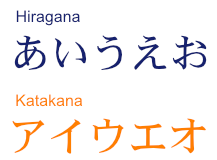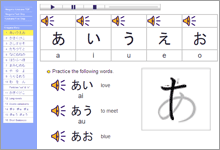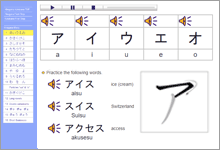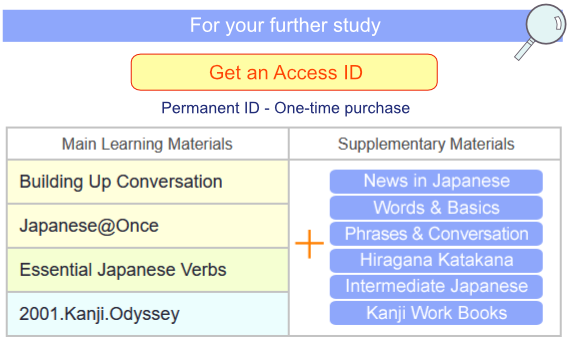Let's learn Japanese characters, Hiragana Katakana online.
Japanese language uses three characters, Hiragana, Katakana and Kanji.
Kanji came from China in the 5th to the 6th centuries.
Then later Hiragana and Katakana evolved to represent "readings" in Japanese.
Kanji represent forms of something or situation and each of them represent meaning.
On the other hand, Hiragana and Katakana are phonetic symbols.
They do not represent any meaning. Learn more - Hiragana Katakana Overview
Hiragana Katakana self-learning materials
|
called Kana 50-On Hyoo |
PDF file for printing, 3 pages, A4 |
|
including Hiragana tables, 15 pages, B5 |
including Katakana tables, 15 pages, B5 |
including Hiragana Katakana writing practice sheets, 26 pages, B5
Let's start learning Hiragana Katakata. This is for your warming-up.
If you are new to learning Japanese characters, go Hiragana first.
This series is a supplementary material available to members.
Let's Read Sentences in Hiragana Katakana
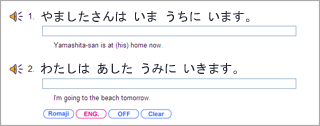 |
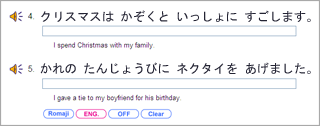 |
This series is a supplementary material available to members.
Hiragana Katakana - Overview
Both Hiragana and Katakana consists of 46 basic letters and several combination letters.
The vowels are a, i, u, e and o.
 |
 |
In modern Japanese, Hiragana is used for native Japanese words.
Katakana is used for loanwords (words of foreign origin) such as Amerika (America) and Wain (wine).
 |
 |
 |
 |
The long vowels are written in the following ways.
(See Hiragana First Step about details of the long vowels)
Hiragana
 |
 |
 |
 |
 |
 |
 |
 |
 |
 |
Katakana - The long vowel is indicated by a symbol " - ".
(See Katakana First Step about details of the long vowels)
 |
 |
 |
 |
The double consonants are indicated by the small tsu.
(See Hiragana First Step about details of the double consonants)
 |
 |
 |
 |
The particles wa and o are written in the following.
(See Hiragana First Step about details of the particle "wa" and "o")
 |
 |
 |
 |
Ordinary Japanese sentences are written in the following.
(See Hiragana First Step for more example sentences with audio)
 |
 |
 |
 |
There is no Space between word and word in the ordinary Japanese sentence.



